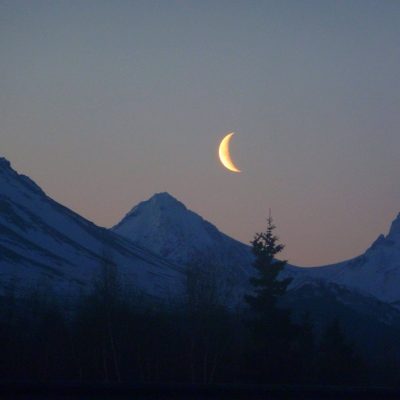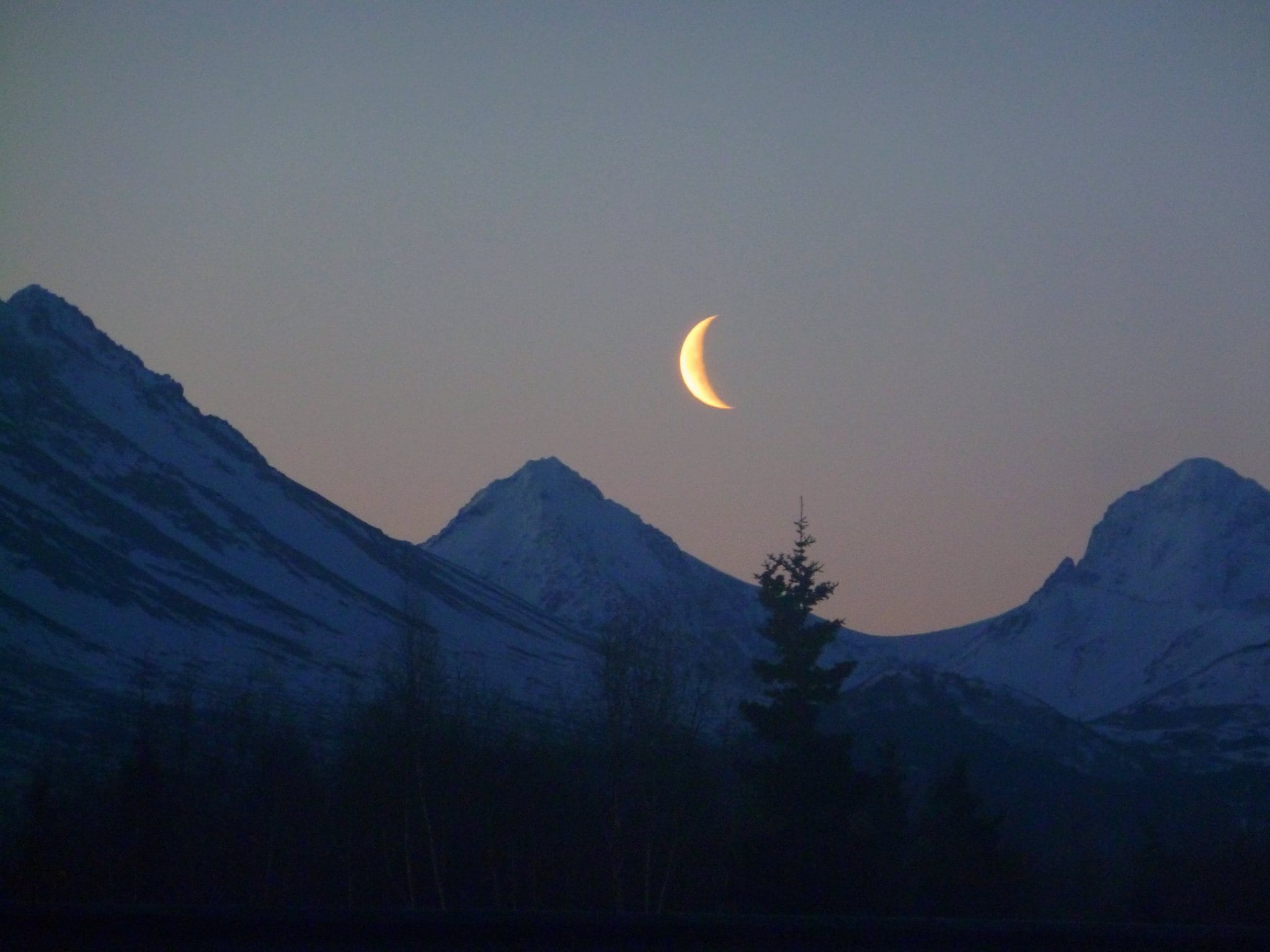Dear ones –
“In the middle of life’s way, I found myself in a dark wood…” These are the opening words to Dante’s Inferno, the first book of the Divine Comedy. They are about how one can feel lost and in need of a companion to find the truth. In his case, he finds himself with the famous (and dead) Roman poet, Virgil. And they go on Dante’s famous journey through Hell, and then eventually in the two books no one seems to like as well, Purgatorio, and Paradiso, through Purgatory and Heaven. The birthday of the Commedia was this past month, and so I’m thinking about Hell, Purgatory, and Heaven.
And Hell, Purgatory, and Heaven (as Dante sees them, especially), make me think of the moon and stars. The celestial lights that Genesis says were put in the sky to mark the time for festivals. (Isn’t that a lovely conception?)
Last week I wrote about how people need to hear/read your story. I said, “Be daring,” at least three times. But what does that look like? And what do celestial bodies have to do with it?
The poet David Whyte says that we have the inclination, only to “come out when the moon is full.” By that, he means only to show our shiny parts. Only to show our successes, our accomplishments, and those other parts of ourselves that feel acceptable for others to see. Whyte reminds us, that like the moon, our lives, our identities, our wisdom… it all comes in phases. While, for example, our wisdom is always with us, living in our bodies, just as the moon is always there, it may not be shining brightly out at any given time.
Living in our bodies, and yet not shining brightly for others to see. Certainly this is the case for our moon, for all our lunar selves. We must not choose only to come out when the “moon” of our lives is “full,” for only those three days, otherwise hiding in shame for the rest of the month.
Similarly, in the Wiccan Wheel of the Year, we have an invitation to experience the range of human emotion, not just to be shiny all the time. This year is solar, not lunar, but it, too acknowledges that there are many ways to feel, many ways to need, many ways to be brilliant or dim—and all of them are part of the human experience.
We go from the winter solstice, the darkest moment immediately giving over to the tiniest sliver of hope. Christina Rosetti’s “bleak midwinter.” We come together in light and song and warmth. We do that because in the Northern Hemisphere, in the coldest December, we desperately need to remember that life is good, that we will have enough, and it is by sharing and being together that we can have enough.
Then comes Imbolc. This celebration is the fire festival that reminds us through its matron goddess, Brigid, that we have agency. We can make things happen. She is the particular goddess of (among other things and people) smithcraft, poetry and song, and healing. She reminds us that we have the power—just as the tiniest shoots of spring are coming up, just as the snowdrops bloom where She passes—that we can make change in our lives.
Then we’re at high Spring, the celebration of the Equinox that has so much in common with the Jewish and Christian holidays near the same time. Our seed starts are doing well. Beneath the earth, our seeds, with sun and tending, have unfurled themselves and are standing not quite steadily, but they are striving sunward. And they are strengthened by the breeze, by air moving around them.
Beltanetide – where we find ourselves now — is the thready beginning of summer for us, and it is the holiday of Delights on the Green. We weave the Maypole, we give, receive, offer, and take pleasure in one another and enjoy the fragrance of buds and blossom, both those blooming now, and those who will burst out in Midsummer. Beltane and Midsummer are the “full moon” solar times. They are the powered-up, joyful, delighted, sex-in-the-fields and lying-on-the-forest-floor times. And some practitioners celebrate only Beltane, as though they want to remain in a state of only joy and floral delights forever. But the Wheel turns to Midsummer.
Midsummer is the height of power, the joy of feeling our strengths – and the acknowledgement that all must prepare to pass the Wand at some point. We dance and sing, the fires are lit, and the sliver of the solar year’s decline passes as we dance. We begin to learn the very beginning of lesson that will come through most powerfully at Lammas, the lesson of self-sacrifice.
And Lammas, the bread harvest, comes six weeks later. It is at Lammas that we celebrate sacrifices made for the good of the community. Some of us mythologically – at least some years – enact a sort of passion play, a way of looking at giving over for the greater good. We note that the grain falls to make way for not just to be milled for our bread, but also for the gleaners who come behind. Lammas, of all the spokes of the Wheel, joins those of us with much to be in connection with those of us who have little.
Midautumn is what I think of as Michaelmas or St. Francis’ time, from my Catholic upbringing. Wiccans and other Pagans also call it Mabon. It is the fruit festival—apples, grapes, the fall fruit, not the stone fruits of summer, but the later ones, the ones that will make cider and wine.
And then finally we come to the time of the Ancestors and Descendants, Samhaintide, when the dark is clearly rising and embracing us. When our children dress as ancestors and our ancestors voices ring in our ears. We offer them both solemn offering and parties for their joy beyond the Veil. The dark is coming fast and thick, and we bring together what and who we can to celebrate.
We come out into the world with the range of human emotion. We mustn’t try only to come out when the sun is high, only during the joy of Beltane or the strength leading up to Midsummer. We need ALL of ourselves. And furthermore, we need all of us to need all of us to survive.
In Christian parlance, Madeleine L’Engle, storyteller, poet, mystic, and Episcopalian said in her book A Stone for A Pillow, “I cannot come to the Heavenly Banquet until I want all of us to be there.”
We are all in this Big Picture together, eh?
We need to trust the phases of our interior moons, the shifting of the light, the different times and different moods in which we find ourselves. Both the bright moon and dark moon have stories to tell, feelings to teach, realities to unveil. And among the lights and shadows of those stories is are shapes of of strangeness, a brokenness, and of madness. That last shadow too, needs love, compassion, and truthtelling.
What I mean by all this is a continuation of last week’s Reflections – there is someone, somewhere, who needs to hear your story. Someone out there needs you. Not just the shiny you, but the parts that the culture says are bad or ugly or broken. There is someone who needs your dark moon story.
And yes, I’ve written about a lot of “taboo” things – bipolar disorder, sexual assault, neurodivergence (ADHD variety), hearing voices…but there are stories yet to tell that are feeling hard. I’ll get there, I suspect, and you’ll help me along.
You always do.
Love,
~Catharine~
PS — If a group experience feels overwhelming, you have reservations, or you think you might like to work with me in some other way–like one-to-one spiritual accompaniment–let’s schedule a call.



